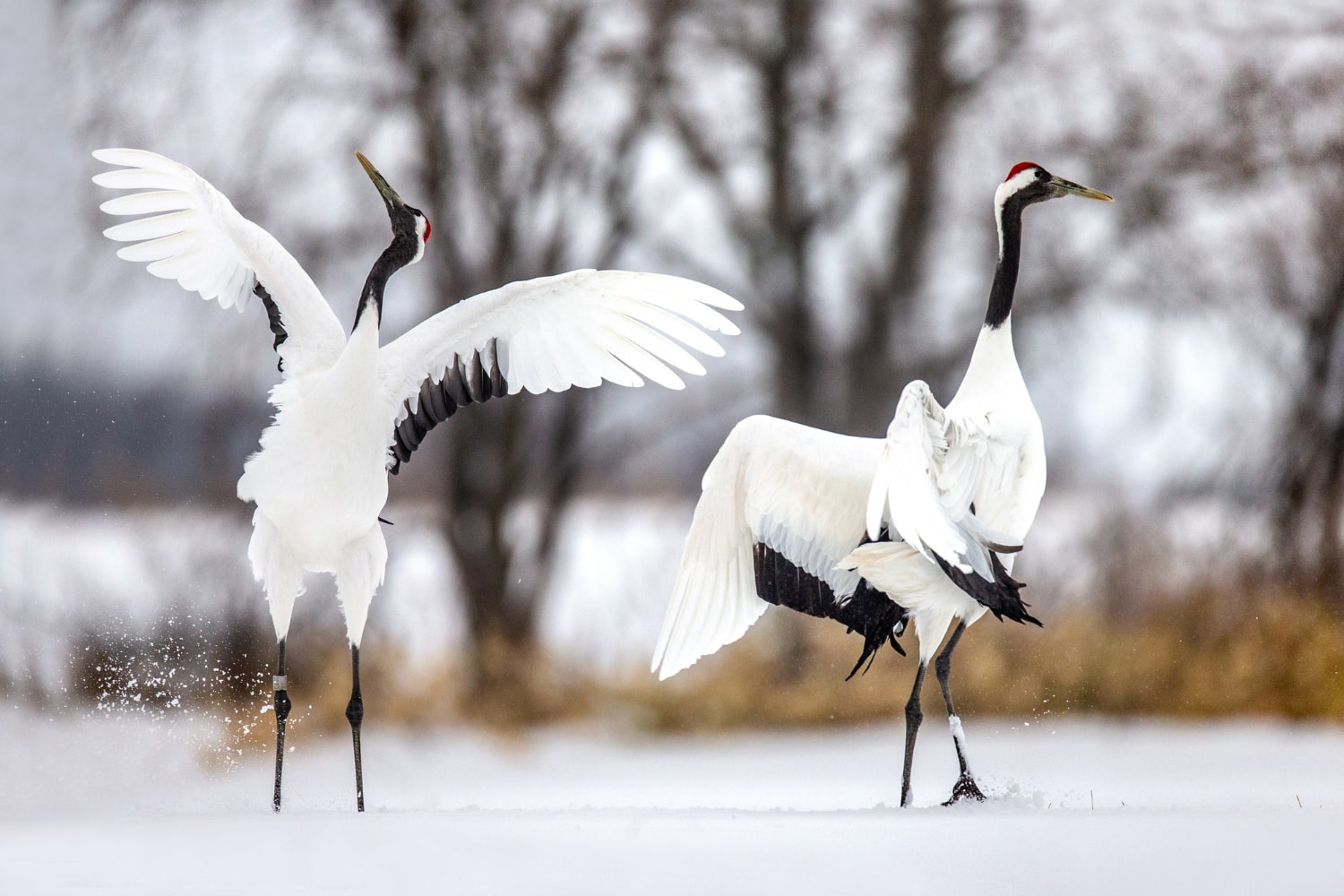Cranes are among the most majestic and graceful birds on Earth, admired for centuries for their beauty, flight, and symbolic meaning. Their images appear in myths, legends, poetry, and folk art across many cultures. The crane is considered a symbol of fidelity, longevity, and spiritual renewal. These birds amaze not only with their elegance but also with their intelligence, organization, and remarkable behavior. Below are fascinating and educational facts about cranes that you might not know.
- Cranes belong to the crane family and include more than 15 species found on every continent except Antarctica and South America. The most well-known species are the grey crane, the sandhill crane, the red-crowned Japanese crane, and the African crowned crane. Each species has its own distinctive coloring, call, and habits.
- Cranes are among the oldest birds on Earth. Their ancestors appeared more than 60 million years ago, shortly after the extinction of the dinosaurs. Fossils discovered by archaeologists show that ancient cranes looked almost identical to modern ones.
- These birds are known for their incredible loyalty. Cranes mate for life, and even after losing a partner, they often remain single. Their courtship dances, in which they jump, spin, and spread their wings, are considered one of the most beautiful displays in nature.
- The average lifespan of a crane in the wild is around 20–25 years, but in captivity, they can live up to 40–50 years. There are recorded cases of cranes living for more than half a century. This makes them some of the longest-living birds in the world.
- During migration, cranes travel vast distances. Some species cover more than 10,000 kilometers each year, flying between their breeding and wintering grounds. Their migration routes often remain unchanged for hundreds of years.
- Cranes fly in a V-shaped formation, which helps reduce air resistance and conserve energy. Each bird flies slightly lower and to the side of the one in front, taking advantage of the air currents created by its neighbor’s wings. When the leading bird gets tired, another takes its place, allowing the flock to fly thousands of kilometers without stopping.
- Cranes have a rich vocal system. Their resonant calls can be heard from several kilometers away. Mated pairs often perform synchronized “duet calls,” where the male and female alternate in perfect rhythm.
- Cranes usually build their nests near wetlands, rivers, or lakes. They use dry grass and reeds, often choosing small islands or dense vegetation to protect themselves from predators. The female lays one to three eggs, and both parents take care of the chicks.
- Crane chicks are well-developed when they hatch. Within a few hours, they can walk and even swim. Their parents feed them insects, small fish, and plant material until they can find food on their own.
- Cranes have exceptional memory and can recognize people. In zoos, they can distinguish their caretakers from strangers and often show affection toward those who look after them for many years.
- Cranes play an important role in the culture of many nations. In Japan, they symbolize longevity and happiness; in China, they represent immortality and nobility; and in Ukraine and Poland, they stand for home, peace, and longing for one’s homeland.
- In ancient legends, cranes were often depicted as messengers of the gods or as the souls of ancestors. Their return in spring was seen as a sign of hope, warmth, and renewal.
- Cranes communicate even during flight. They maintain vocal contact to stay together in the air, especially during night migrations.
- Their diet is diverse and changes with the seasons. Cranes eat seeds, berries, insects, small animals, amphibians, and fish. This varied diet helps them survive in different environments.
- Cranes have long, strong legs that allow them to move through marshy areas and defend themselves from predators. When threatened, they can deliver powerful blows with their beak or legs.
- These birds have excellent vision, which helps them navigate during migration and spot food from great distances. They can detect even the slightest movement at dusk.
- Cranes dance not only during courtship but also at other times of the year, seemingly out of sheer joy. Their elegant movements have inspired human art forms such as dance, poetry, and painting.
- Some species of cranes are endangered. The red-crowned Japanese crane and the Siberian white crane are particularly rare. Their populations are declining due to habitat destruction and poaching.
- Scientists have discovered that cranes have complex social structures. During migration, they gather in large flocks where older birds guide the younger ones. These groups function much like well-organized families.
- Cranes play an essential role in the ecosystem. They help disperse plant seeds and control insect and small animal populations. Their presence is a sign of a healthy and balanced environment.
- There are nature reserves around the world dedicated to the protection of cranes. The most famous ones are located in China, Japan, India, and Russia. Thanks to conservation efforts, some species have been saved from extinction.
Cranes are extraordinary creatures that embody the beauty, strength, and wisdom of nature. These incredible facts remind us of the harmony of life and the importance of protecting wildlife. Watching their graceful flight fills us with peace, freedom, and admiration for the natural world that must be preserved for future generations.





